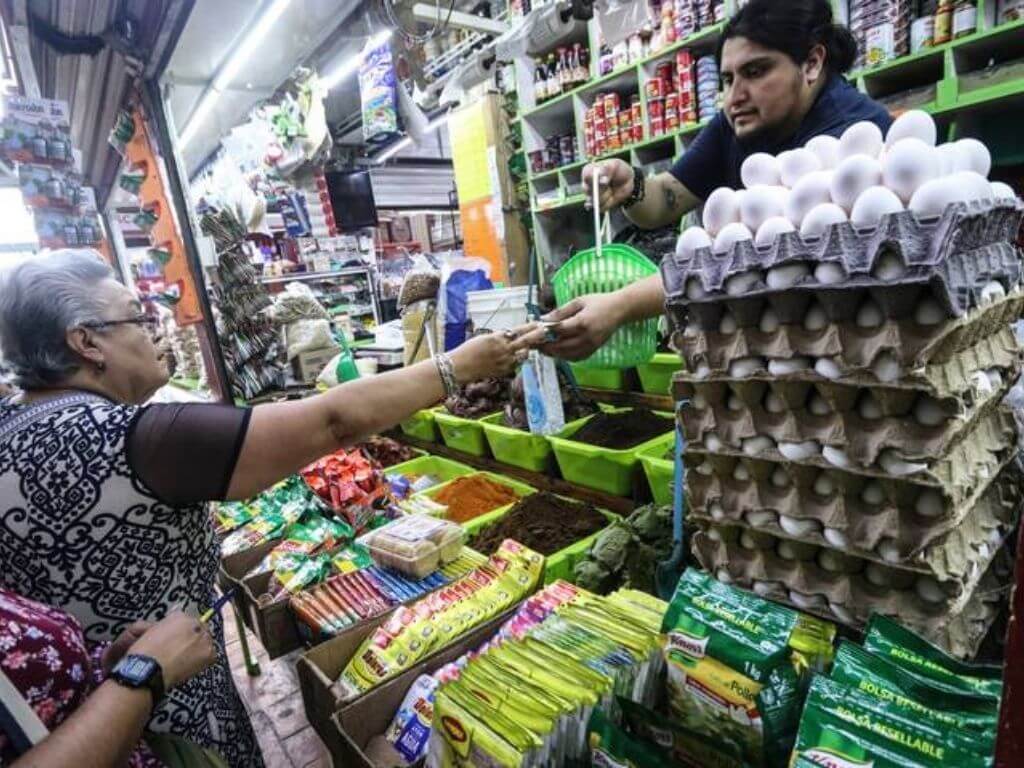 A typical shopper in Mexico buys products at the corner store and pays for them in cash. In fact, 2.1 million traditional convenience stores (tienditas), or microenterprises, in Mexico account for most sales among micro and small businesses, but 83% of them do not accept any form of payment other than cash. This is a conundrum for policy makers who have long viewed electronic payments as a cure-all for the challenges that tienditas face.
A typical shopper in Mexico buys products at the corner store and pays for them in cash. In fact, 2.1 million traditional convenience stores (tienditas), or microenterprises, in Mexico account for most sales among micro and small businesses, but 83% of them do not accept any form of payment other than cash. This is a conundrum for policy makers who have long viewed electronic payments as a cure-all for the challenges that tienditas face.
Electronic payments create a digital financial pathway that could help these business owners easily manage cash flow, keep customer databases, and establish their credit history with formal lenders. And with the onset of the COVID-19 pandemic, the digitization of these small business payments has taken a new significance. In-person cash transactions now pose public health risks to both tiendita owners and consumers. In addition, strengthening the capacity of these entrepreneurs to manage their business finances through digital payments is essential to meet the new demands of customers.
A study done in November 2020 by Mastercard and Americas Market Intelligence to analyze the effects of COVID-19 on consumer behavior in the region found that cash usage declined by an average of 12% during the pandemic, with Chile in the lead (17%) and Jamaica in last place (7%). Although Mexico is among the most cash-bound countries, along with Colombia, a snowball effect is expected in electronic payments, which will continue to grow in volume in the region. The study projects that the use of cash will continue to decline, and that it is unlikely that this long-established custom in Latin America will return to its pre-pandemic state.
However, the lack of acceptance of electronic payment among tienditas is still surprising, especially considering its availability. The technology to accept electronic payments is readily available and accessible in the Mexican market. Gone are the days of having to install a computerized point-of-sale system, with bar code reading equipment and a telephone-connected credit card terminal. Today, a Bluetooth-controlled dongle that accepts electronic payments will only cost a retailer about $20, on average, if they have a smartphone. So why don’t most small businesses in Mexico accept electronic payments?
Investigating the adoption of electronic payments among tienditas
Researchers at Stanford University Graduate School of Business and the World Bank, supported by the Mastercard Impact Fund in collaboration with the Mastercard Center for Inclusive Growth, are addressing this puzzle through a field study in Guadalajara, Mexico. In partnership with innovative financial technology provider Kiwi, the research team is testing interventions to encourage businesses to adopt electronic payments (including remote and contactless e-payment options), through a rigorous field experiment with 1,200 businesses. Although its research began before the COVID-19 outbreak, it is now uniquely positioned to provide actionable information as the pandemic threatens to leave cash-only companies behind in a socially distanced era.
The survey of 270 small businesses revealed patterns that defy common understanding of technology adoption by small businesses. Among cash-only businesses, all were already aware of the technology available to accept electronic payments. In addition to information, accessibility did not seem to be a barrier either. On average, the companies earned USD $585 in monthly profits, so the electronic payment device would cost a small percentage of just one month’s profits. Interestingly, the researchers found that tiendita owners were by no means technologically challenged. Smartphone usage was high among owners, in accordance with statistics showing that almost 80% of Latin Americans will have smart mobile devices by 2025.
Similarly, these store owners used other digital technologies extensively: 80% of owners said they used the Internet for product and supplier research, and 50% invested time in some form of digital marketing (whether a Facebook page, a listing on Google Maps, or a group chat to promote their store). This reveals a pre-existing familiarity with and appreciation for using digital tools to enhance their business.
Reasons why local businesses avoid electronic payments
Basically, this data suggests that local businesses avoid electronic payments for more strategic reasons. During initial field interviews, the researchers found that electronic payment fees were the top concern for some of these small business owners. Specifically, they were concerned about losing a portion of each sale (typically 3% to 5%) in fees to an electronic payment service provider. Some business owners even considered completely altering their pricing strategy to compensate for fee costs. Many small businesses were reluctant to accept electronic payments because they did not perceive a strong demand from their customers.
Sometimes their perception was based on reality, especially for small businesses based in low-income neighborhoods where customers lack the means to pay electronically. But this argument also played out in neighborhoods with relatively high numbers of debit card users among shoppers. This is a classic chicken-or-the-egg dilemma; customers do not use electronic payment methods because small businesses do not accept them, and small businesses do not accept electronic payments because they think customers do not want to pay electronically.
These insights tell us that, if we want small businesses to adopt electronic payments, we must avoid a typical training model that focuses mainly on education and information. Instead, interventions that directly address the concerns of small businesses could be more valuable. First, offering temporary fee discounts to small businesses could help them overcome initial resistance to the use of electronic payment devices. In addition, proactive marketing of electronic payments to customers could be very helpful, even if it consists of something as simple as a sign on the window that says, “Card payments welcome”. This could help small businesses learn about customers’ hidden demand to pay with cards, correct their misconceptions, and push customers to go cashless. COVID-19 could also play a role in solving the chicken-and-egg dilemma, as it may prompt customers to consider non-cash payment options.
These interventions, which are currently being tested in a randomized field experiment, have also been adapted to the social distancing requirements of COVID-19. Researchers have developed video tutorials for business owners that explain how to troubleshoot problems with their electronic payment technology. They also launched a WhatsApp account to provide personalized tech support to remote business owners. Meanwhile, they designed in-person interventions (currently on hold, to be resumed after COVID-19) with a “Make change, don’t preach” philosophy that the researchers implemented in Mexico City, where they tested modernization interventions for small businesses. There, both front and back of the house modernization interventions improved the sales performance of small businesses by 15-20% over a control group of businesses that were similar at the outset.
In this new environment, Mastercard is supporting the recovery and digital development of small businesses. The Digital Allies program offers alternatives for micro, small and medium-sized companies to start or improve their digital skills. In addition to giving them access to tools that allow them to operate remotely, Digital Allies provides them with support in marketing strategies and business management. These actions represent how the private sector working through partnerships can support the region’s businesses in post-pandemic recovery.
Understanding the dynamics that hinder (or enable) digital inclusion for a large portion of small businesses can help policymakers and financial service providers solve the chicken-or-the-egg dilemma. And, perhaps most importantly, these insights can help drive the development of solutions for small businesses so that they can reap the benefits of an increasingly digital economy, especially as they navigate the new COVID-19 world.
This column is part of a series on digital finance, conducted in conjunction with Mastercard. Explore the full series here.

